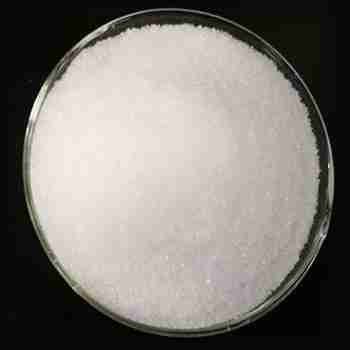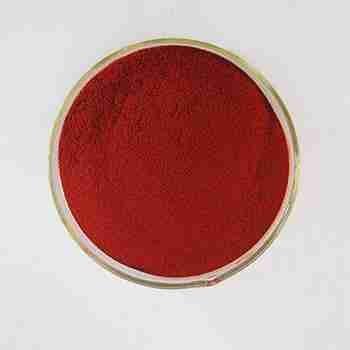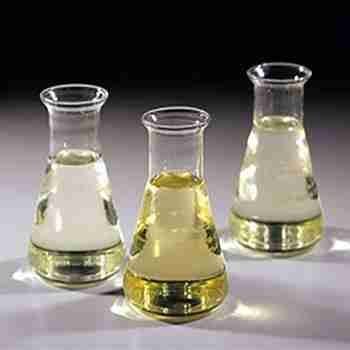Adenosine CAS 58-61-7
Assay: 99%-101%
Appearance: White powder
Package: 25kg/drum
Capability: 200MT/year
Sample: Available
related documents:
COA of Adenosine 58-61-7
Request for product documents
发送询盘
Description
Adenosine Quick?Details
Chemical Name: Adenosine
CAS No.: 58-61-7
Molecular Formula: C10H13N5O4
Molecular Weight??267.24
Appearance: White powder
Adenosine Typical Properties
Item
Standard
Assay
99%-101%
Identification
IR spectrum should match that of the working standard
Melting point
223-238 ??
???????? Specific rotation
-68??-72??
Loss on drying
?Q0.5%
Residue on ignition
?Q0.1%
Heavy metals
?Q10ppm
Acidity or alkalinity
??????? Meet the requirements
Limit of Ammonia
??Q0.0004
Limit of chloride
??Q0.007%
Limit of sulfate
??Q0.02%
Total of impurities ?Q0.5%
Guanosine ?Q0.1%
Inosine ?Q0.1%
Uridine?Q0.1%
Adenine ?Q0.2%
?
Adenosine Usage
1. Antiarrhythmic drugs can make paroxysmal supraventricular tachycardia into sinus rhythm. Used for supraventricular arrhythmias associated with atrioventricular.
2. Antiviral drug.
3. The pharmaceutical industry is mainly used for the production of adenosine arabine and adenosine triphosphate; Coenzyme and its series products are the main raw materials of drugs such as cyclic adenosine phosphate.
4. For the production of ATP, adenosine arabine, coenzyme A.
5. Treatment of angina pectoris, myocardial infarction, coronary insufficiency, arteriosclerosis, essential hypertension, cerebrovascular disorders, sequelae of stroke, progressive muscular atrophy, etc
6. Endogenous neurotransmitters.
7. Adenosine-induced apoptosis of hL-60 cells in human leukemia. It also has anti-arrhythmia properties. A neurotransmitter, adenosine A receptor in all subtypes, ACTS is the preferred endogenous agonist.
Adenosine Packaging and Shipping
Packing: 25kg/drum
Adenosine Storage
Ventilated low-temperature drying warehouse; Store separately from food ingredients.
| 5 |
|
0 |
| 4 |
|
0 |
| 3 |
|
0 |
| 2 |
|
0 |
| 1 |
|
0 |
- 2
- 2-diallylpent-4-en-1-amine
- 4
- 95-16-9
- Ammonium sulfamate
- Benzothiazole
- cas:67889-00-3ح2
- cas:83524-75-8 | pigment black 32
- cas:928836-00-4 | 2
- cas:932745-70-5 | 4
- Chemical Minerals
- Coconut diethanolamide
- Daily Chemicals
- discount
- for sale
- General pvc resin
- hexyl D-glucoside
- in stock
- Lauramidopropyl betaine
- LAURIC ACID MONOETHANOLAMIDE
- Petroleum Additives
- Plasticiser
- Ploymers
- price
- PVC
- quotation
- Raw Materal
- Remove term: Petroleum Additives Petroleum Additive
- SODIUM ETHYL 2-SULFOLAURATE
Related Products
Product name:Cyclopentane
Purity:96%
Appearance:White powder
Package:25kg/bag
Sample:Available
Chemical Name: Ammonium Iron(II) Sulfate
Synonyms: Diammonium iron bis(sulphate); iron (ii) ammonium sulfate
CAS No.: 10045-89-3
Molecular Formula: FeH5NO4S
Molecular Weight: 170.95
Chemical Name:?UDP-Glucuronic Acid Trisodium
CAS No.: 63700-19-6
Molecular Fomula: C15H23N2NaO18P2
Molecular weight: 604.28
Appearance: Solid
Assay: 98%
Chemical Name: Arabic gum
CAS No.: 9000-01-5
Appearance: powder
Chemical Name:?UDP-glucuronic acid
CAS No.: 2616-64-0
Molecular Fomula: C15H22N2O18P2
Molecular weight: 580.28
Appearance: Solid
Assay: 98%
Ectoine is a naturally occurring osmoprotectant, a cyclic amino acid derivative that offers exceptional cell-stabilizing properties. Highly valued in cosmetics and pharmaceuticals, it enhances product efficacy by maintaining cell integrity under various environmental stresses.
Chemical Name: N-Acetyl-D-mannosamine
Cas: 7772-94-3
MF: C8H15NO6
MW: 221.21
Appearance: White to off-white powder
Chemical Name: Zinc citrate
Synonyms: Zinc citrate trihydrate
CAS No.: 546-46-3
Molecular Formula: C6H8O7Zn
Molecular Weight: 257.5
Appearance: White powder
Chemical Name: 3-Hydroxybutyric acid
CAS No.: 625-71-8
Molecular Formula: C4H8O3
Molecular Weight: 104.1
Appearance: White powder
Chemical Name: UV-120
Other Name: (2’,4’-Di-tert-butylphenyl 3,5-di-tert-butyl-4-hydroxybenzoate)
CAS No.: 4221-80-1
Molecular Fomula: C29H42O3
Molecular weight: 438.66
Assay: ≥99%(LC)
L-arginine (or arginine) is an amino acid that is recognized to be the ??building blocks?? of healthy proteins.?We get arginine from our diet plan, especially from animal-derived healthy protein foods, consisting of beef and various other sorts of red meat, chicken, fish, eggs, and also dairy items.
In addition to being normally present in a ??entire healthy protein?? that gives all the important amino acids we need, it is also produced in a research laboratory setting so it can be made use of to develop supplements that benefit heart health, sports efficiency, psychological performance, as well as extra.
EC 3.4.21.14, previously classified, now redirects to EC 3.4.21.67, identifying endopeptidase So. This serine endopeptidase is integral in the hydrolysis of peptide bonds, a critical function in biological systems. Its applications extend across research and development in the pharmaceutical and biotechnological industries.



















Reviews
There are no reviews yet.